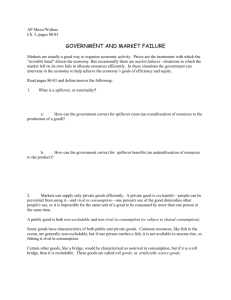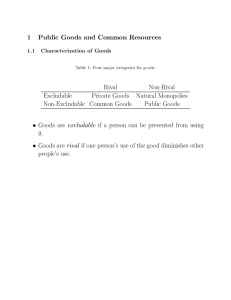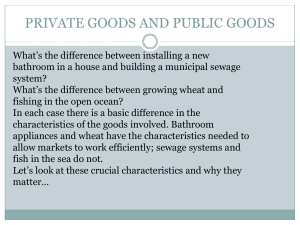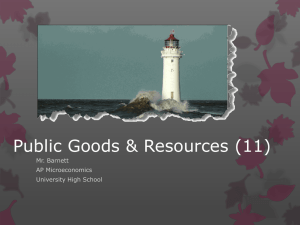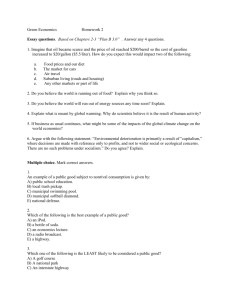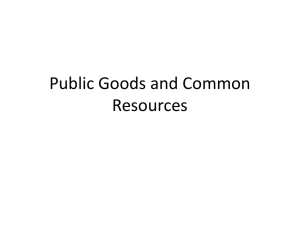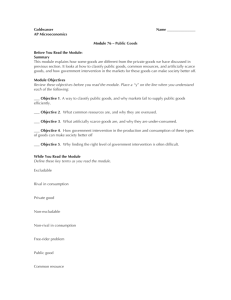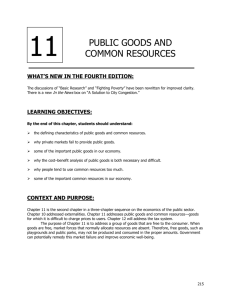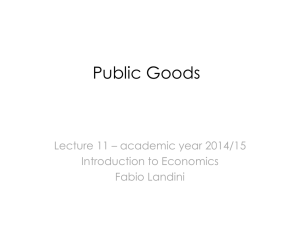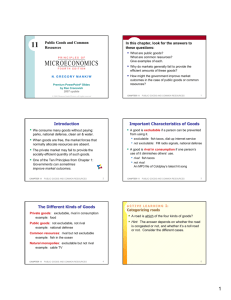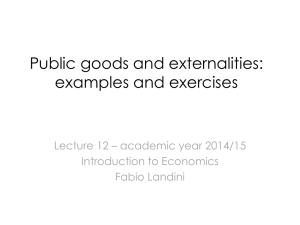Chapter 11 1. Consider the rivalry and excludability of each of the
advertisement
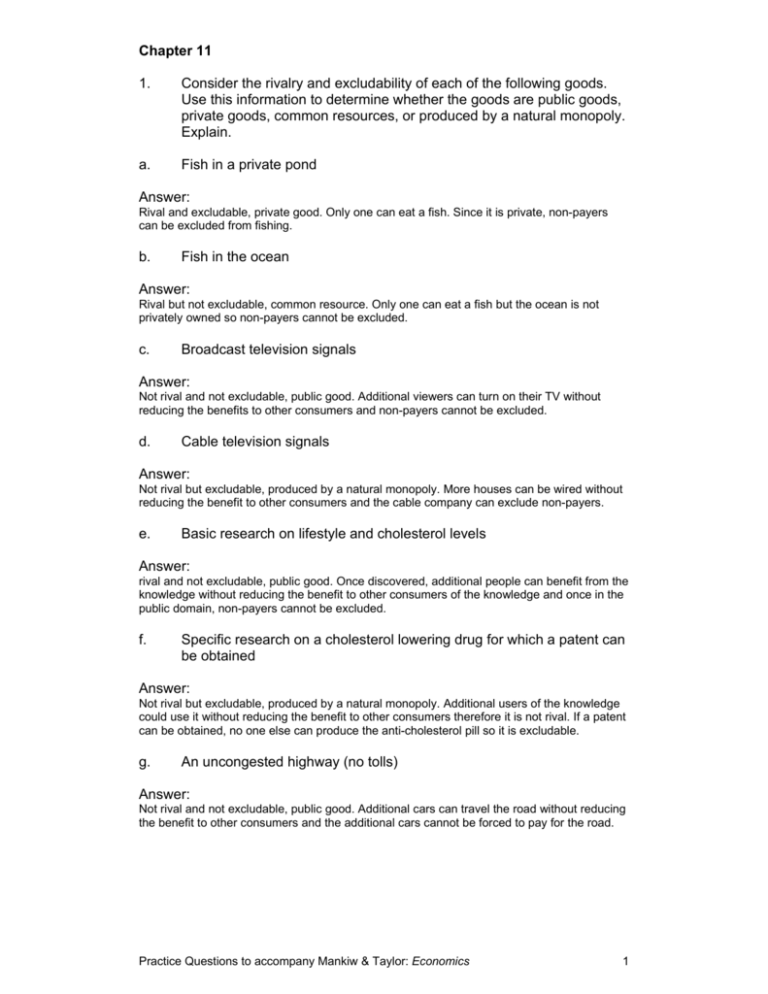
Chapter 11 1. Consider the rivalry and excludability of each of the following goods. Use this information to determine whether the goods are public goods, private goods, common resources, or produced by a natural monopoly. Explain. a. Fish in a private pond Answer: Rival and excludable, private good. Only one can eat a fish. Since it is private, non-payers can be excluded from fishing. b. Fish in the ocean Answer: Rival but not excludable, common resource. Only one can eat a fish but the ocean is not privately owned so non-payers cannot be excluded. c. Broadcast television signals Answer: Not rival and not excludable, public good. Additional viewers can turn on their TV without reducing the benefits to other consumers and non-payers cannot be excluded. d. Cable television signals Answer: Not rival but excludable, produced by a natural monopoly. More houses can be wired without reducing the benefit to other consumers and the cable company can exclude non-payers. e. Basic research on lifestyle and cholesterol levels Answer: rival and not excludable, public good. Once discovered, additional people can benefit from the knowledge without reducing the benefit to other consumers of the knowledge and once in the public domain, non-payers cannot be excluded. f. Specific research on a cholesterol lowering drug for which a patent can be obtained Answer: Not rival but excludable, produced by a natural monopoly. Additional users of the knowledge could use it without reducing the benefit to other consumers therefore it is not rival. If a patent can be obtained, no one else can produce the anti-cholesterol pill so it is excludable. g. An uncongested highway (no tolls) Answer: Not rival and not excludable, public good. Additional cars can travel the road without reducing the benefit to other consumers and the additional cars cannot be forced to pay for the road. Practice Questions to accompany Mankiw & Taylor: Economics 1 h. A congested highway (no tolls) Answer: Rival but not excludable, common resource. Additional cars reduce the benefits of current users but they cannot be forced to pay for the use of the highway. i. An uncongested toll road Answer: Not rival but excludable, produced by a natural monopoly. Additional cars do not reduce the benefits to current users but they can be excluded if they don’t pay the toll. j. A hot dog served at a private party Answer: Rival but not excludable, common resource. If one eats the hot dog, another cannot. However, once provided, party-goers cannot be charged for eating the hot dogs. k. A hot dog sold at a stand owned by the city government Answer: Rival and excludable, private good. If one eats the hot dog, another cannot. Even though it is supplied by the government, it is being sold so non-payers can be excluded. 2. Suppose the city of Roadville is debating whether to build a new motorway from its airport to the city centre. The city surveys its citizens and finds that, on average, each of the one million residents values the new highway at a value of €50 and the highway costs €40 million to construct. a. Assuming the survey was accurate, is building a new motorway efficient? Why? Answer: Yes, because the total benefit is €50 x 1,000,000 = €50 million while the cost is €40 million. b. Under what conditions would private industry build the road? Answer: If the road could be built as a toll road, then private industry could make the road excludable and the project could be profitable. c. Should the city build the road? On average, how much should it increase each resident's tax bill to pay for the road? Answer: Yes. €40. d. Is it certain that building the motorway is efficient? That is, what are the problems associated with using cost-benefit analysis as a tool for deciding whether to provide a public good? Answer: Yes. €40. Practice Questions to accompany Mankiw & Taylor: Economics 2
